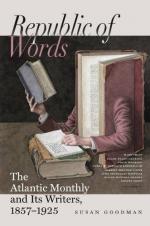This incident was the legitimate sequel to events in Minnesota which had transpired during a period of ten years. Organized as a Territory in 1849, a single decade had brought the population, the resources, and the public recognition of an American State. A railroad system, connecting the lines of the Lake States and Provinces at La Crosse with the international frontier on the Red River at Pembina, was not only projected, but had secured in aid of its construction a grant by the Congress of the United States of three thousand eight hundred and forty acres a mile, and a loan of State credit to the amount of twenty thousand dollars a mile, not exceeding an aggregate of five million dollars. Different sections of this important extension of the Canadian and American railways were under contract and in process of construction. In addition, the land-surveys of the Federal government had reached the navigable channel of the Red River; and the line of frontier settlement, attended by a weekly mail, had advanced to the same point. Thus the government of the United States, no less than the people and authorities of Minnesota, were represented in this Northwest movement.
Still, its consummation rests with the people and Parliament of England. Sir Edward Bulwer Lytton was prepared with a response to his own memorable query,—“What will he do with it?” Shall the Liberal party be less prompt and resolute in advancing the policy, announced from the throne in 1858, of an uninterrupted series of British colonies across the continent of North America? This will be determined by the Parliamentary record of 1860.
ART.
PALMER’S “WHITE CAPTIVE.”
Once on a time a maiden dwelt with her father,—they two, and no more,—in a rude log-cabin on the skirts of a grand old Western forest,—majestic mountains behind them, and the broad, free prairie in front.
Cut off from all Christian companionship and the informing influences of civilized arts, all their news was of red men and of game, their entertainments the ever-varying moods of Nature, their labors of the rudest, their dangers familiar, their solacements simple and solitary. Alone the sturdy hunter beat the woods all day, on the track of panthers, bears, and deer; alone, all day, his pretty daughter kept the house against perils without and despondency within,—the gun and the broom alike familiar to her hand.
Commissioned to illumine the murk wilderness around her with the glow of her Christian loveliness and faith, Nature had touched her with inspirations of refinement, with a culture as unconscious as the growing of the grass, and the clear intuitions of a spiritual life full of heaven-born inclinations. Nature, too, had endowed her with fine lines of beauty, attitudes of grace, movements of dignity and love, and all the charmfulness that had learned its shapes from flowers and its arts from birds. Nature’s officers,




